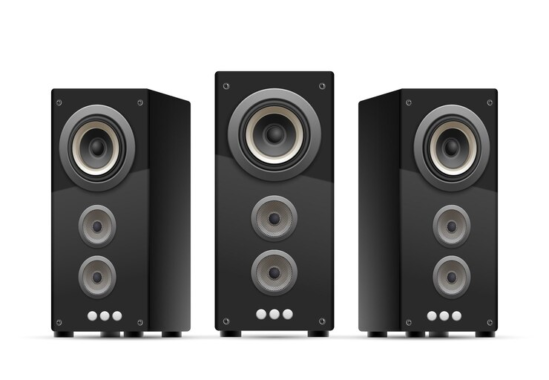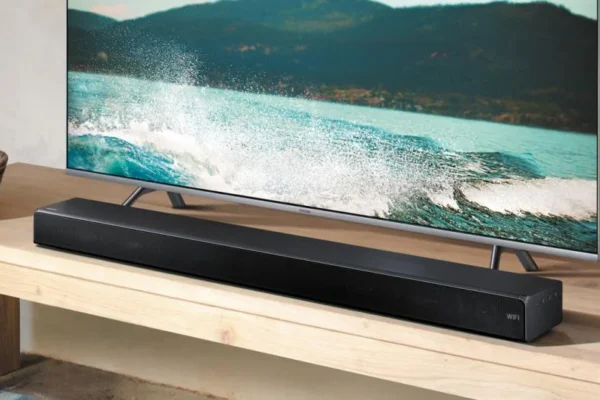In our fast-moving world, headphones have become like our trusty sidekicks. They tag along with our smart gadgets and computers, showing off our style and who we are. But with so many choices out there, how do you figure out which headphones are right for you? Do you like the tough and cool-looking ones, or do you prefer the almost invisible earbuds? It’s a bit like trying to find your favorite song on a really busy radio station—not easy!
But here’s the thing: picking the right headphones can be much easier if you think about how you plan to use them. We’re here to explore the differences between open back and closed back headphones. We’ll dig into what makes each type special and how they match up with what you like.

So, let’s find out the difference between open back and closed back headphones. By the end of our journey, you’ll have a better idea of which headphones are your perfect fit, and you’ll be ready to enjoy your music in your own awesome way!
I. What Are Open Back Headphones – An Overview

Open-back headphones are designed with a unique structure that sets them apart from other headphones, like closed-back ones. The main feature that defines open back headphones is the design of their ear cups. Unlike closed-back headphones, which have sealed ear cups, open-back headphones have ear cups with openings or vents on the back or sides. This design choice has a significant impact on how they perform and sound.
1. Performance of Open-Back Headphones
The best open-back headphones are renowned for their ability to craft a natural and expansive soundstage, achieved by permitting air and sound to move unrestrictedly. Audiophiles and professionals praise their design, which curbs sound reflections, resulting in heightened precision across frequencies. While the bass may be less forceful than its closed-back counterparts, it boasts a harmonious equilibrium.
A paramount concern is comfort, achieved through their design that facilitates improved airflow, negating overheating or pressure during extended listening sessions. However, it’s vital to acknowledge that open-back headphones lack noise isolation and may transmit sound to those nearby. Their true calling lies in serene environments, making them optimal for meticulous listening sessions in the comfort of homes.
The inherent precision of their sound reproduction makes them a cherished choice for audio enthusiasts and professionals alike. Regrettably, their unsuitability for noisy surroundings or situations necessitating isolation warrants consideration.
Some of the best open-back headphones on the market are Sennheiser HD 650, Beyerdynamic DT 990 Pro, Audeze LCD-2, and Audio-Technica ATH-R70x Ultimately, the best open-back headphones depend on your personal preferences, intended usage, and budget. Be sure to consider factors such as sound characteristics, comfort, and the specific activities you’ll be using them for when making your choice.
Read More: 5 Best JBL Mini Speaker for All Occasions in 2024
II. What Are Closed-Back Headphones? An Overview
Closed-back headphones have sealed ear cups, meaning the back of the ear cups is closed off. This design is different from open-back headphones, where the ear cups have openings or vents. Closed-back headphones are known for their unique performance characteristics and are often chosen for specific purposes.
1. Performance of Closed-Back Headphones
Closed-back headphones are excellent at blocking external noise due to their sealed design. This makes them perfect for focusing on music even in noisy surroundings. They also offer enhanced bass, making them popular in genres like electronic, hip-hop, and rock. These headphones minimize sound leakage, keeping your music private and not disturbing those around you.
They are portable and suitable for on-the-go use, maintaining your music’s personal nature. Additionally, their closed design provides a level of privacy, making them great for personal listening in public places. However, closed-back headphones might have a narrower soundstage compared to open-back headphones, which can affect the perception of spaciousness in the audio.
Sony WH-1000XM4, Beyerdynamic DT 770 Pro, Audio-Technica ATH-M50x, and Sennheiser HD 280 Pro are a few well-regarded closed-back headphones that have gained popularity among users and professionals.
Read More: Best Multi Channel Home Theater System in 2023
III. What Are Semi-Open-Back Headphones?
Semi-open-back headphones are a hybrid design that combines features from both open back and closed back headphones. They feature ear cups that are partially enclosed, allowing some airflow and sound to pass in and out.
This design aims to strike a balance between the natural soundstage of open-back headphones and the sound isolation of closed-back headphones. Semi-open-back headphones provide a compromise between the two types, offering a more open sound compared to closed-back headphones while providing some level of noise isolation. This makes them suitable for various scenarios, such as critical listening, studio monitoring, and situations where you want to maintain awareness of your surroundings. However, the specific characteristics of semi-open-back headphones can vary based on the model and manufacturer.
IV. The Difference Between Open Back And Closed Back Headphones
Open back and closed back headphones are two distinct designs that offer different listening experiences and are suited for various purposes. Here’s a breakdown of the key differences between open back and closed back headphones:
1. Sound Isolation
When comes to sound isolation between open back and closed back headphones , Open-back headphones have ear cups with perforations or vents that allow air and sound to pass through. This design does not provide effective sound isolation, and external noises can easily be heard while wearing them. Additionally, sound can leak out, making them less suitable for quiet environments or public use.
Closed-back headphones feature ear cups that are fully enclosed, creating a seal around your ears. This design offers better sound isolation, as it prevents external noises from entering your ears and also keeps your music from leaking out and disturbing others.
2. Sound Quality
Open-back headphones are known for their more natural and open soundstage. The perforated ear cups allow air to flow, resulting in a less confined sound. This design is often preferred for critical listening, classical music, and genres where a wider soundstage and accurate sound representation are important.
Closed-Back Headphones: Due to their closed design, these headphones generally offer more pronounced bass and better low-frequency response. The closed design helps contain the sound within the ear cups, leading to more immersive sound for certain genres like electronic or hip-hop.
3. Sound Leakage
Open-back headphones have a characteristic concern: sound leakage. Due to their design, sound can escape through the open vents on the ear cups, making your audio audible to those nearby. This aspect makes open-back headphones best suited for private listening sessions in quiet environments. For situations where privacy is crucial, closed-back headphones with better sound isolation might be a more suitable choice.
Closed-back headphones excel at preventing sound leakage due to their design. The closed ear cups create a sealed environment around your ears, containing the sound within the headphones. As a result, closed-back headphones are a considerate choice to use in shared or public spaces because they make it less likely that people nearby will hear the audio you’re listening to. This feature is especially beneficial when you’re in situations where you want to enjoy your music, movies, or games without imposing your audio on others.
4. Soundstage:
Open-back headphones are known for providing a more natural and spacious soundstage. The open design allows air and sound to flow freely, creating a sense of depth and width in the audio presentation. This expansive soundstage can make it feel like you’re listening to music in a room rather than having the sound confined to your head. Audiophiles and those looking for an immersive and detailed audio experience frequently favor it.
Closed-back headphones typically offer a more intimate and localized soundstage compared to open-back headphones. The closed design restricts the movement of air and sound, which can result in a soundstage that feels closer to your ears. While closed-back headphones may not provide the same level of spaciousness, they often offer better noise isolation and can be suitable for scenarios where you want to focus solely on your audio without external distractions.
5. Comfort:
Open-back headphones, known for their open design, allow for better airflow around your ears, resulting in potentially more comfort during extended use. However, this comfort can vary depending on the specific headphone model.
Closed-back headphones have a closed design. The closed design creates a physical seal around your ears, which can sometimes lead to a warmer and more isolated feeling. Some users might experience discomfort during long listening sessions due to heat buildup.
6. Use Cases:
Open-back headphones are well-suited for critical listening, at-home use, studio work, and scenarios where sound quality and accuracy are prioritized over isolation.
Closed-back headphones are suitable for on-the-go listening, commuting, recording, and situations where you need to block out external noise or prevent sound leakage.
The choice between open back and closed back headphones depends on your preferences and intended usage. Closed-back headphones are great for isolation and enhanced bass, while open-back headphones offer a more natural soundstage and are preferred by audiophiles and studio professionals.
Read more: Soundproofing for Rooms: All You Need to Know
Exploring The Choice Between Closed-Back and Open-Back Headphones
Both closed-back and open-back headphones have distinct qualities that make them suitable for different purposes, so let’s see, in the debate of open-back headphones vs closed headphones, which one is the winner?
1. For Mixing
When it comes to open-back vs. closed-back headphones for mixing, closed-back headphones are ideal. They provide accurate sound representation and isolation, facilitating precise adjustments in controlled environments. Open-back headphones, on the other hand, excel at mixing tasks that require spaciousness. Their natural soundstage aids in placing instruments and vocals accurately within the mix.
2. In The Realm of Gaming
Open-back headphones vs closed headphones Closed-back headphones offer noise isolation that enhances immersion by blocking external distractions. While this is going on, gamers looking to improve their spatial awareness favor open-back headphones. They allow external sounds to enter, contributing to a more immersive experience, especially in open-world or competitive gaming scenarios.
3. Studio Use
Closed-back headphones are beneficial for recording sessions, as they prevent sound leakage and ensure clean vocal and instrument recordings. On the other hand, between open-back vs closed-back headphones for mixing, open-back headphones can serve as an alternative for mixing and mastering in home studios or when studio monitors are unavailable, thanks to their flat frequency response.
4. Casual Listening In Public Spaces
Closed-back headphones prevent sound leakage, making them suitable for maintaining privacy and not disturbing others. Open-back headphones are often preferred for personal listening at home, providing an immersive experience akin to room-filling speakers. So here, in open-back headphones vs closed , closed headphones are the winner.
5. Situational Awareness
also plays a role. Closed-back headphones provide privacy in office settings, allowing you to concentrate without disturbing colleagues. Open-back headphones, with their controlled design, are ideal for situations requiring awareness of surroundings, making them suitable for controlled mixing environments or when ambient sounds are essential.
Ultimately, the choice between open back and closed back headphones depends on your specific needs and the context in which you’ll be using them, whether it’s for mixing, gaming, studio work, or casual listening.
Read More: Multi-Room Home Audio System: All You Need to Know
Final Words
Our exploration into the differences between open back and closed back headphones sheds light on the unique characteristics that define each type. As outlined in our blog, open-back headphones deliver a spacious and natural soundstage, making them a favored choice for critical listening and immersive music experiences at home. On the other hand, closed-back headphones stand out for their sound isolation, pronounced bass response, and suitability for various real-world scenarios, such as public spaces and on-the-go situations.
We hope our comprehensive overview has provided valuable insights into these headphone types, allowing you to make an informed decision that aligns with your personal preferences and specific usage needs. Whether you’re seeking accuracy in music production, enhanced gaming immersion, or simply enjoying music privately, understanding the distinctions between open-back and closed-back headphones empowers you to select the perfect companion for your auditory journey.
FAQs About Open Back and Closed Back Headphones
Q: How do semi-open back headphones differ from open back and closed back headphones?
A: Semi-open back headphones offer a compromise between the two designs. They provide a more spacious soundstage than closed-back headphones, allowing for some degree of soundstage depth and instrument separation. However, they don’t achieve the same level of natural openness as true open-back headphones. Additionally, while Semi-open back headphones offer better isolation than open-back headphones, they may not provide the same level of noise isolation as closed-back headphones.
Q: Are Open Back Headphones better for your ears?
A: The answer to “ Are open headphones better for your ears” answer is simple Open-back headphones offer a more natural sound and can reduce listening fatigue due to their design. However, they don’t provide strong noise isolation. Whether they’re better for your ears depends on your preferences and usage context. Responsible listening habits are crucial for ear health regardless of headphone type.
Q: Are open-back headphones for gaming comfortable for long gaming sessions?
A: Open-back headphones for gaming can be comfortable for extended gaming sessions due to their breathable design that minimizes pressure build-up. However, comfort can vary based on the specific headphone model and individual preferences. Beyerdynamic DT 990 Pro, Audio-Technica ATH-AD700X,AKG K712 Pro are some of the best open-back headphones for gaming as they are lightweight and comfortable for long gaming sessions.


